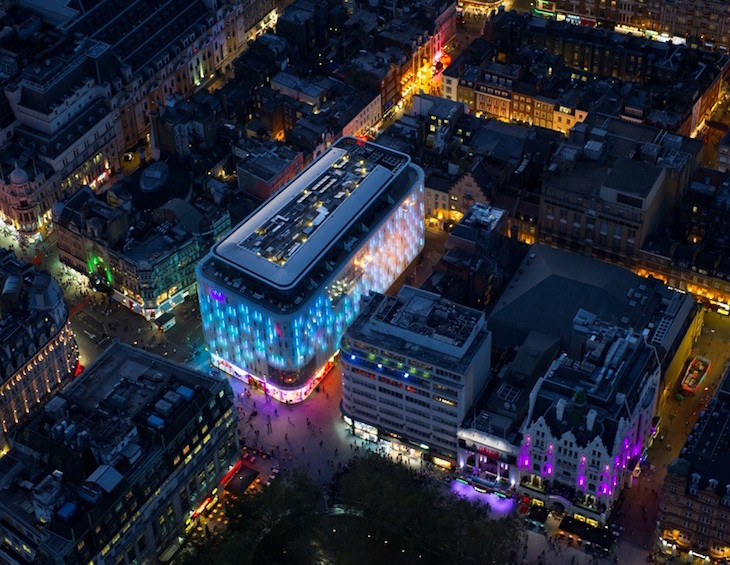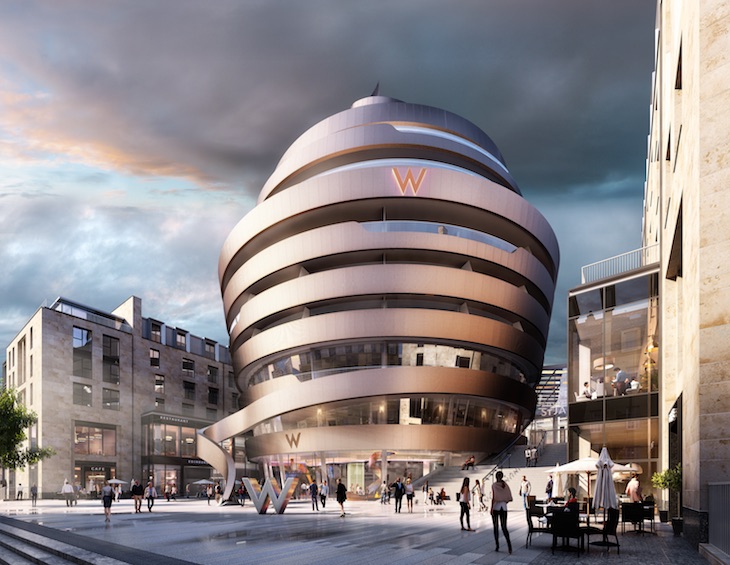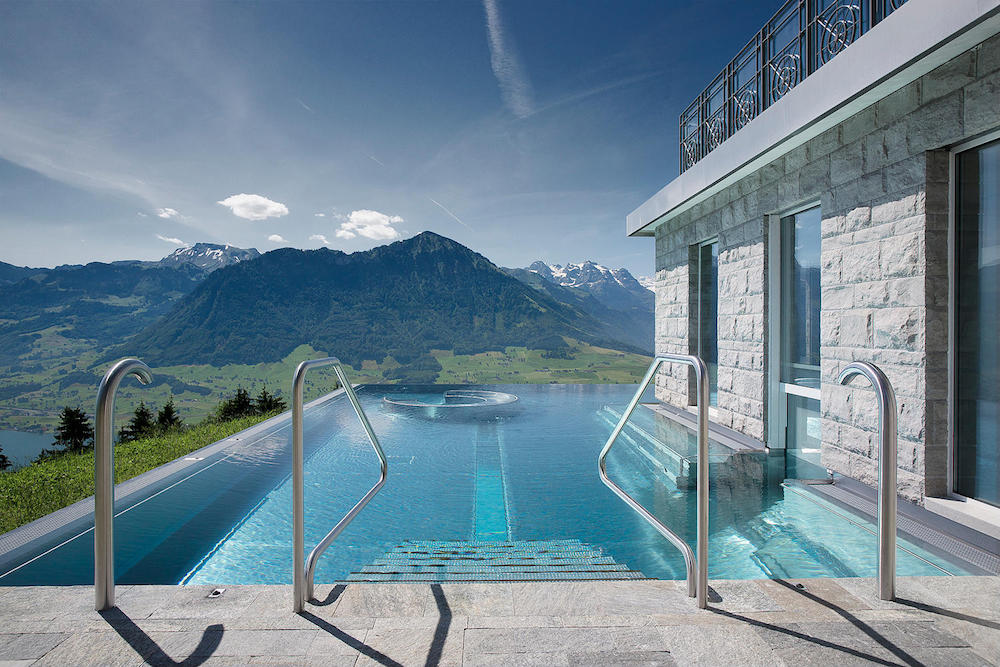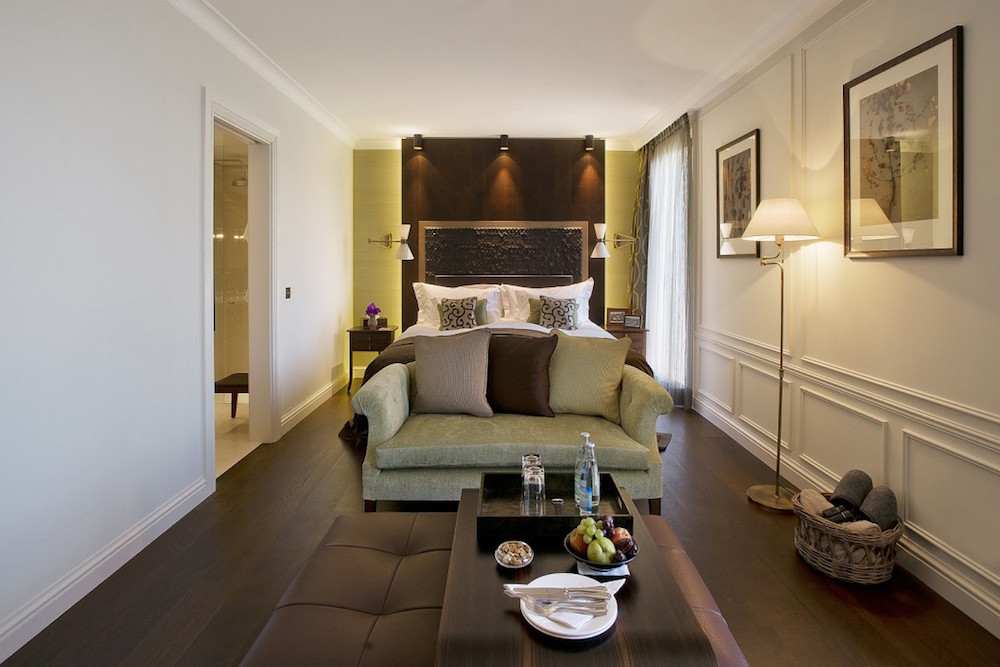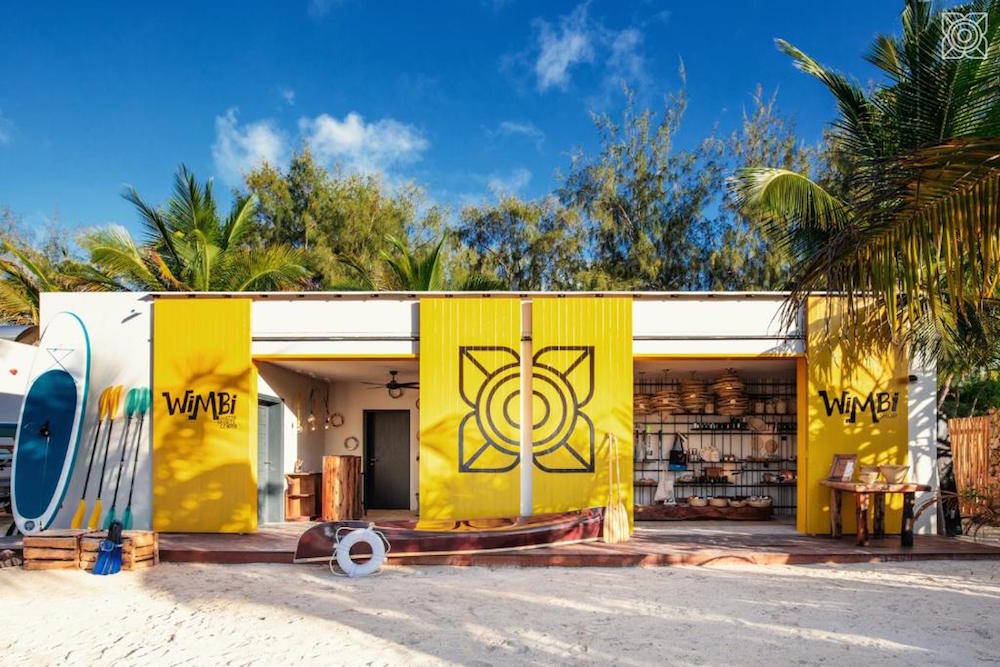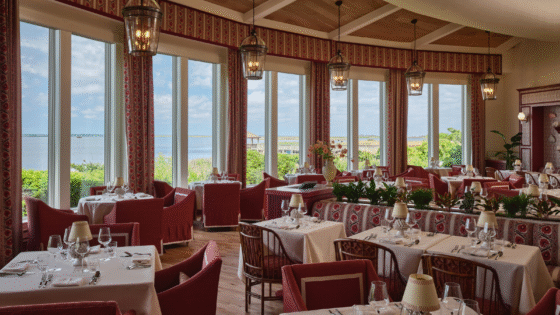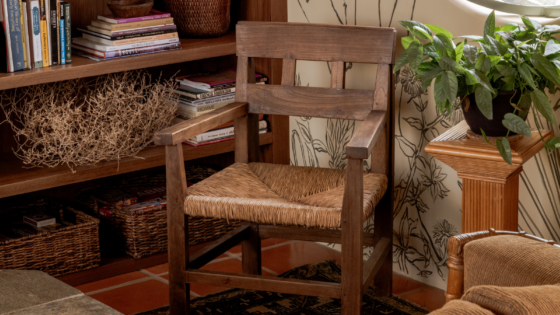In collaboration with our friends at NEWH UK Chapter, we have launched an editorial series that is aimed to bring together established designers and architects with those who are at the beginning of their career. For our first Q&A in the series, we invited young architect James Ingram to interview James Dilley, Director, Jestico + Whiles…
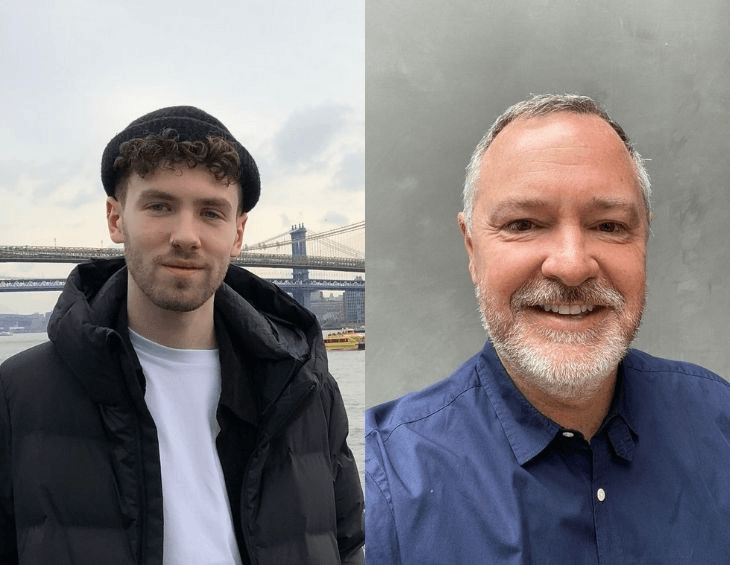
Students who are graduating from university are lost like rivers running into unknown seas. The salt water is unfamiliar and the waves are turbulent and unrelenting. And all of a sudden, as Covid-19 hit the shoreline, even the most established design studios globally were drifting uncontrollably off course.
Casualties were inevitable as the industry tried to stay afloat during the treacherous storm but even we were surprised to see leading hotel design and hospitality studios such as Wilson Associates and most recently RPW Design go under.
Hotel Designs and NEWH have teamed up to cast life rafts out to the upcoming designers and architects who have struggled to place themselves into studio life as a result – a transition that should be smooth and seamless after years of education and preparing for the long journey.
In a unique collaboration, we are working together in order to connect young designers with the industry, all while producing engaging and insightful content for our readers. In this editorial series, we are calling on young designers and architects to come face-to-face with leading industry figures in hotel design and hospitality – and no question is off limit.
To kickstart our chapter, we invited James Dilley, Director, Jestico + Whiles, who has led teams on hotel projects both in the UK and internationally, including completing projects in territories, such as Malta, Marrakesh, Berlin, Amsterdam, Tbilisi and Kyiv, to be interviewed by James Ingram, a young, hungry and talented architect who won the NEWH Ideology Award in 2019. Ingram joins Dilley following his graduation from Ravensbourne University and having just returned from an internship in Prague.
- Meet our interviewer, James Ingram, a young architect – currently looking for work – who won the NEWH Ideology Award in 2019
- Meet our interviewee: James Dilley, Director, Jestico + Whiles who has designed hotels in all corners of the world.
James Ingram: How do you find inspiration to make unique narratives and experiences in your designs?
James Dilley: For me, now, I find inspiration in the people I meet. It’s wonderful that in hotel design, a lot of the owners don’t have a hotelier background. They love hotels and often it’s those people who are the visionaries. We deal with people from all walks of life – and they have entered into hospitality because they have a real passion for the industry.
When I was younger, the experience of a chain hotel was special, it was a posh, upmarket experience and it was very different to today. The very uniform style of those hotels was born out of the USA, post-war, and it was a very international (with a small ‘I’) mindset.
Overtime that would become a dated hospitality concept, and hotels began to respond to their surrounding culture and climate. These days, a hotel’s design tends to be born of locality and with the aim to create a unique sense of place.
Brand books used to be incredibly specific. Thankfully, that’s not the only way to proceed any more – and more creative concepts in hospitality are being created as conventional ideas are challenged.
“I started learning once I was flipped out of the spaceship of education and parachuted into the real world.” James Dilley, Director, Jestico + Whiles.
- Image caption: Jestico + Whiles completed the design of the 192-key W London in 2011. James Dilley described its unique exterior ones as, ‘putting on its glad rags at night.”
- Image caption: Concept render of W Edinburgh, which has been a labour of love for the team at Jestico + Whiles.
JI: In your early career, how did you contend with adversity and coming across hurdles in the workplace that couldn’t be mimicked as a student?
JD: To be honest, I started learning once I was flipped out of the spaceship of education and parachuted into the real world. I graduated at a time when many teachers were not designers or architects , they were teachers lecturing on design and architecture. I was passionate about interesting people and travel. Call it serendipity, but that’s the route I chose, or that chose me….
“The best design comes from challenging convention and doing things that haven’t been done before.” – James Dilley, Director, Jestico + Whiles.
JI: What’s something you wish you’d known when you first started as a designer?
James Dilley: That there isn’t a right way to do something. The best designs come from challenging convention and doing things that haven’t been done before. Innovation and creativity are therefore key. Design is not an exam where you get a tick or a cross next to your answers. It just doesn’t work like that.
- Image caption: In 2011, Jestico + Whiles artfully refurbished this chalet-style hotel, Villa Honegg, from the renowned hotel which occupied this majestic site at an altitude of almost 1,000 metres in the Swiss Alps. | Image credit: Timo Schwach
- Image caption: The five-storey chalet style hotel was built in the rare Scandanavian ‘Gustavian’ style, with its facades lovingly restored by local artisans to surpass their former glory. | Image credit: Timo Schwach
JI: How do you stay up to date with current trends?
JD: By surrounding yourself with good people. You can read, you can collect as many direct experiences as you can, but the breadth of what you need to be aware is so great that you can’t cover it all as an individual. You need to surround yourself with a team who, ideally, think differently to you,the best teams are made up of different people.
JI: Is it easier or more challenging these days to specify with more options to designers?
JD: When it comes to product design, it’s exciting to see new innovations, but over time you find yourself going back to products you specified in the past and to brands that you trust. There’s always a red line running through your design Usually you are designing similar styles so the same products fit in nicely. Designers have a responsibility to ensure they are sourcing materials ethically. Stone is an excellent example. You can select stone from anywhere in the world – you can buy blue marble from Brazil or purchase limestone from Italy for the price of wallpaper. The choice is huge but we are now more conscious around sustainability, things have to be ethically sourced, and people are becoming more innovative when sourcing these items.
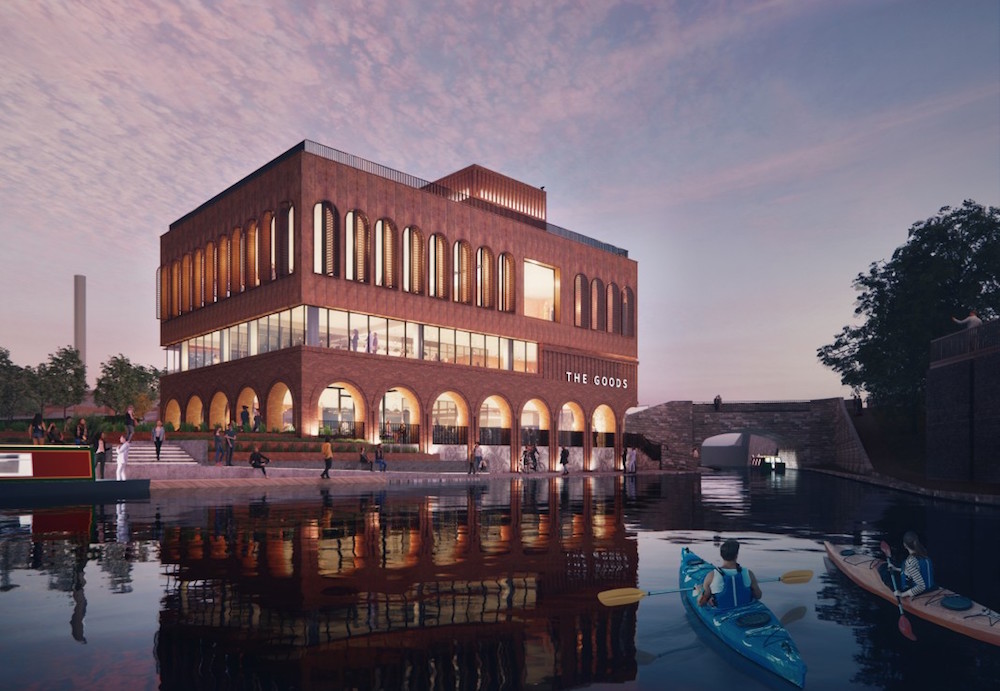
Image caption: James and his team at Jestico + Whiles are currently working on designing The Island Quarter, a £650m mixed-use development in Nottingham that is set to become a new landmark for the city and the Midlands.
JI: Do you tend to have favourite suppliers?
JD: One of the most important thing, for me when specifying a product, is the after service – the parts of the relationship suppliers don’t get paid for. Using stone as an example again, it’s a difficult material to work with at times. And if you have a problem then you want the supplier you sourced it from to rectify it without too much discussion. After care will certainly swing things for me when we are specifying.
JI: How do you think hotel design will change as a result of the pandemic?
JD: I hope it won’t change too much – a big part of hospitality is about sociability. You’re very rarely in an environment where you want to be isolated. Social distancing, in a basic sense where you simply distance yourself socially is not for me.
Having said that, there are some exciting things that have emerged during the pandemic, and that’s around how people live. Everyone at the moment seems to be socialising outdoors – they are having a great time, and I see brands utilising every piece of outdoor space in an imaginative way as being an exciting step forward in hospitality.
“People do not necessarily expect [nor want] indulgence if sustainability is the cost.” – James Dilley, Director, Jestico + Whiles.
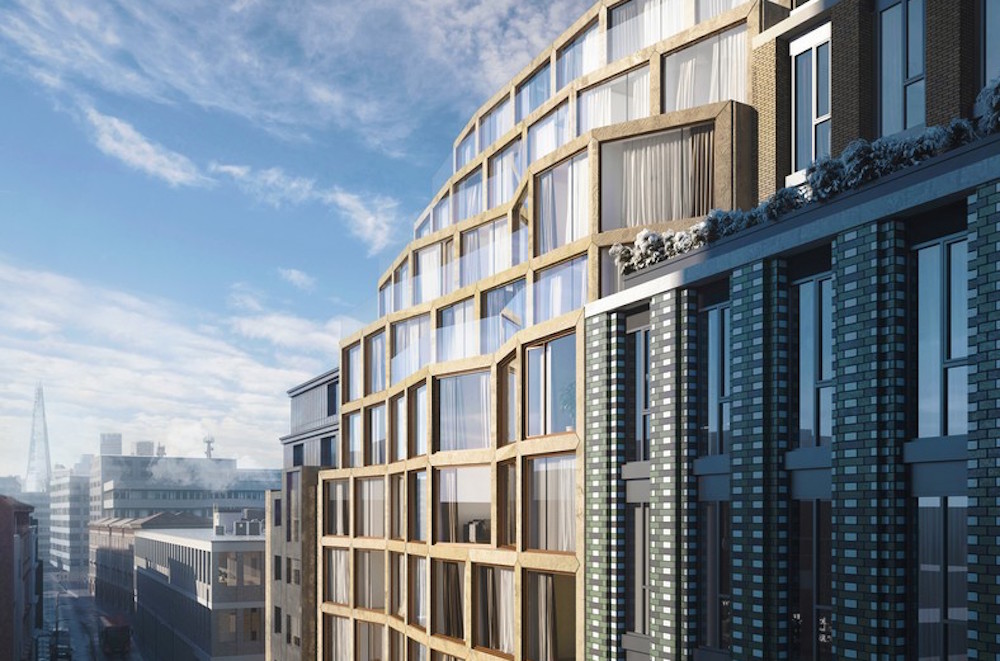
Image caption: Understanding sense of place, Jestico + Whiles’ design for a new-build hotel on Paul Street, London, responded directly to the area’s architectural and cultural context in the heart of Shoreditch.
JI: Many would argue that consumers, in general, are looking for more of a premium experience. How do you balance that with incentives to become more sustainable in design and architecture?
JD: The luxury experience does not always come at a premium. Affluent people choose to stay in less traditionally “luxurious” places , not because they can’t afford to go elsewhere; people are looking for authentic experiences. This is a big move, and people do not necessarily expect [nor want] indulgence if sustainability is the cost.
A few years ago, we opened Zuri Zanzibar, for example. The social attitude to that hotel, in design and operation, is extremely important. Local people are brought into the operations in order to help them live a better life. If you are bringing in a fresh water supply or power to a part of the island that previously didn’t have one, then why wouldn’t you share that with the village?
- Image credit/caption: Zuri Zanzibar, designed by Jestico + Whiles
- Image credit: Zuri Zanzibar
I think there are other areas that are harder to justify. In some more traditional hotels, you will see a limo going back and forth to pick up individual guests from the airport and this is just not sustainable. Going back further, a lot of hotels and hospitality models rely on travel, which largely is not sustainable either – we can plant trees to offset the carbon that’s come from the flights but it’s not quite balanced out yet. I’m a designer of hotels, but this is a fundamental issue. Travel needs to become sustainable from top to bottom.
“Sadly, there is a lack of people in the industry wanting to give young designers and architects a chance.” – James Ingram, architect.
QUICK-FIRE ROUND
Hamish Kilburn: Who were your design idols at university?
JI: Wassily Kindinscky and in general I was inspired by forms, shapes and expression
JD: Landscape artists, such as Richard Long, Richard Serra and Andy Goldsworthy. And of course, the maestro, Carlo Scarpa.
HK: What would you both say are the most overused words at the moment?
JD: ‘Post-covid’ and ‘technology’
JI: I would say ‘technology’ too, particularly ‘parametricism’
HK: Where’s next on your travel bucket list?
JI: Realistically, somewhere within the UK, like Cornwall. Long term, I’d like to experience India and South East Asia – I want to get of this cultural bubble.
JD: Georgia is an amazing country – and also Malta.
HK: And finally, James Ingram, what is it currently like at the moment for young designers and architects graduating?
JI: Sadly, there is a lack of people in the industry wanting to give young designers and architects a chance. The job market maybe picking up but there is a reluctance for studios to help part 1 students. For example, they are all asking for a year or two experience, which is just not realistic for freshly graduated students.
JD: That’s simply not fair on the students James and I am embarrassed that the industry is taking that position. Getting cheap labour is simply not the point for Part 1 students. It should be a mutually beneficial relationship with give and take both ways. We need to allow students to learn in a live environment and we find we also have a lot to learn from our best students.
This interview is the first in a dynamic editorial series that aims to help shelter many meaningful conversations and bridge the gap between generations in architecture, design and hospitality. Thanks to NEWH, we are able to identify talented designers and architects who are currently at a disadvantage, due to the pandemic, graduating from university with a lack of opportunities. If you would like to contribute to this series, please email the editorial desk.
Main image credit: James Ingram/James Dilley/Jestico + Whiles



